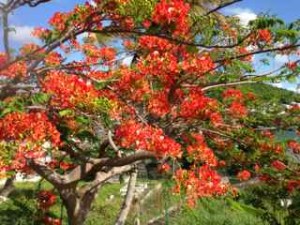Why Flamboyant tree-viewing picnics could be a ‘green’ tool for Haiti
As Rebecca Giggs explains in her beautiful piece on Sakura, “gazing into the throats of flowers is surely one of the most trite, and universal, acts of environmental appreciation.” This is part of the point of the hanami, Japan’s flower-viewing picnics during cherry blossom season.
The hanami, says Ms Giggs, first flourished a thousand years ago, even featuring in an 11th-century novel.
She considers Japan’s aesthetic practices and frank enchantment during Sakura to be very different from “contemporary Western environmentalism”. The latter, she says is chiefly political, and “with a functional view of nature…striving to establish an impartial, globally consistent means of gauging nature’s value…Local forms of environmental imagination have been relegated to the work of poets. Nature is viewed as systemic and quantifiable, neither mysterious nor resplendent. In an overburdened world, this is how we have come to debate the comparative significance of habitats and organisms: as ecosystem services.”
No one can quantify the sheer beauty of the cherry blossom flood, especially as Japan’s urban cherries are purely ornamental in value.
Or the brilliant flowers of the Flamboyant tree. That they are here, in Haiti, makes Haitians so much the richer.
(Tomorrow, Planting now could yield a gorgeous Flamboyant red flood tomorrow)



